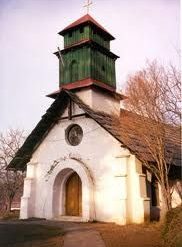Jammu : As bells tolled in the temples of Lord Shiva Monday, what emerged was a heartening story of healing wounds between Hindus and Muslims – wounds inflicted by years of insurgency in Jammu and Kashmir.
For the Hindus, better known as Kashmiri Pandits, Shivratri is the biggest festival on the calendar. And a scene that played out repeatedly this year in areas dominated by them was Muslims embracing and wishing their Hindu friends.
Some were overwhelmed by the gesture of Kashmiri Muslims who travelled long distances to meet them in their resettlement township Jagti, on the outskirts of Jammu, in the rain and freezing temperatures.
“I couldn’t believe my eyes that it was Arshad, my childhood friend, who came to meet me on this big day of ours,” said Kuldeep Raina.
“Trust me, I am the happiest person today. It seems nothing has changed between us in all these years,” Kuldeep said .
Both Arshad Hussain and Kuldeep belong to village Akoor, near Mattan in Anantnag district of south Kashmir, some 60 km north of Srinagar. But due to militancy, Kuldeep had to leave for a camp in Jagti years ago.
Arshad said: “I knew Kuldeep was living here and I thought there could be no better day than this festival when I should visit my friend.”
For Kashmiri Hindus, nightlong prayers at home are followed by a visit to the temple on Shivratri. They also host a feast for friends the next day, known as Salam.
Until militancy broke out in 1989, it was common for Kashmiri Pandits to host lunches for their Muslim friends and neighbours. The Muslims used to look forward to delicacies like fish and mutton balls.
But all that changed after community members migrated to Jammu and other parts of the country.
More than 350,000 Kashmiri Pandits had come out of the valley, many of whom are still settled in Jammu. The Pandits have since suffered from a sense of injustice and persecution.
But the anger against militants and their sympathisers whom the Pandits blame for the forced life in exile – as Kashmiri Pandit leaders like Ashwani Churngoo call it – seems to have subsided, going by the sentiment among community members.
For instance, Mushtaq Ahmad waited for a Kashmiri Pandit family outside Ranishewar temple, housing an icon of Lord Shiva, in the rain, just to hug his friends and congratulate them.
Mushtaq, who is a government employee, went to the home of his friend Sushil Kaul in Janipur, but was told by neighbours that the family had gone to the temple. He headed straight for the shrine.
When Sushil and Mushtaq sighted each other, they couldn’t stop embracing. Tears rolled down their cheeks, retelling the story of two friends being back together on this “bor doh” or dig day.
Perhaps what made a difference this year was that many Kashmiri Pandit youths could go back to the valley after being specially recruited under the Prime Minister’s relief and rehabilitation package programme.
Community members surmised that the measure may have gone a long way in helping bring down the walls of mistrust and encouraging the two communities to reverse the clock to their good old days when they shared each other’s joys and sorrows.
Arshad and Kuldeep would certainly testify to that after a meal partaken together Monday afternoon.
IANS
The opinions, beliefs and viewpoints expressed by authors, news service providers on this page do not necessarily reflect the opinions, beliefs and viewpoints of Hill Post. Any views or opinions are not intended to malign any religion, ethnic group, club, organization, company, or individual.
Hill Post makes no representations as to the accuracy or completeness of any information on this site page.



